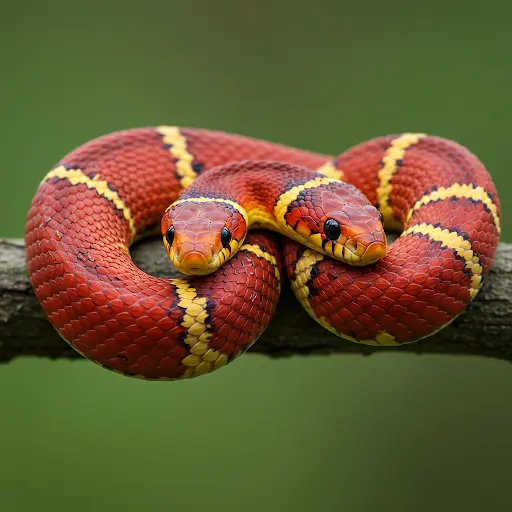Hello! guys I hope that you all will be fine and doing good in your life. Today we will discuss about How do snakes inject venom into prey.
Some snakes have saliva glands that produce toxins that are poisonous to their usual prey. The substance is called venom so these snakes are described as being venomous. Some snake’s venom is so powerful it could kill an elephant.
How Do Cobra Inject Venom Into Prey
About 200 venomous snakes worldwide are thought to be dangerous to people. There are about 412 species like that. Among the most famous of these are the cobras.
Their fangs are at the front of their mouth while the venom gland is further back. the gland is surrounded by muscles that squeeze it when the snake bites and force the venom into the fang and down through the tip into the victim’s flesh
How African Bird Snake Kill Their Prey
Another method of delivering venom can be seen in the African bird snake. These creatures have massive fangs with grils running down one side at the back of their mouths.
Just about the grooves is a hole that leads from the venom gland and when these snakes bite venom drips through the growth into the wound.
Deadliest Snake In America: The Coral Snake
It is the deadliest snake in America and is found in Texas and loves the moist environment. It is as much deadliest that even Its own country does not have any anti-venom for its treatment.
Coral snakes are known for their bright red, black, and yellow rings. They have small heads and tiny fangs. Three types live in the US: the Eastern (found in the Southeast), Texas (found in Texas and Mexico), and Arizona (found in the Southwest) coral snake.
A helpful rhyme to remember is, “Red touch yellow, kills a fellow; red touch black, venom lack.” This helps tell coral snakes apart from harmless snakes with similar colors. This rule only works for US coral snakes. Coral snakes in then other countries may have different patterns.
Coral snakes are venomous. They are related to cobras and have a neurotoxic venom, meaning it affects the nerves. They rarely bite unless bothered. Bites are uncommon and much less frequent than rattlesnake bites.
A coral snake bite might not hurt much and may be hard to see. The venom can still be dangerous. Symptoms which may take hours to appear include nausea, vomiting, tingling, slurred speech, double vision, muscle twitching, weakness and paralysis. The most serious risk is trouble breathing. Deaths from coral snake bites are very rare.
If bitten, go to a hospital immediately. There is antivenom, but not all hospitals have it. Doctors will work with Poison Control to get it if needed. Antivenom is only used if symptoms develop, as it can cause allergic reactions. Patients might need help breathing with a ventilator.

If someone is bitten by the snake then you should stay calm. Don’t try to catch or kill the snake. Do not use old remedies like tourniquets or try to suck out the venom. Keep the person still and the bitten area at heart level. Remove the jewelry and wash the bite with soap and water.
For any snake bite you immediately call Poison Control at 1-800-222-1222. They are available 24/7 and can help determine if the snake is venomous and what to do for it.
How Do Coral Snake Inject Venom Into Prey
Coral snakes have a unique way of injecting venom into their prey. Other snakes strike venom quickly but the coral snakes have short and fixed fangs in the front of their mouths. These fangs are not hollow like a needle but have a groove that the venom flows down.
When a coral snake bites, it tends to hold on and “chew” for a few seconds. This chewing action helps the venom flow down the grooves of the fangs and into the prey. It is like slowly squeezing a tube of toothpaste to get the contents out.
The venom itself is a neurotoxin which means that it attacks the nervous system. This can paralyze the prey making it easier for the snake to swallow.
While coral snakes can deliver a dangerous bite but they are not angry and usually avoid contact with humans.
You can also know about: How Long Can A Snake Go Without Food?
Facts & Features Of Snakes:
- Snakes are reptiles, just like lizards and turtles, but they have no legs.
- They move by slithering, using their scales to grip surfaces.
- Snakes are covered in scales that help protect them and reduce friction.
- They shed their skin as they grow.
- Some snakes are venomous, using their fangs to inject poison into their prey.
- Others constrict their prey, squeezing until it can’t breathe.
- Snakes swallow their food whole, even if it is much bigger than their head.
- They have a forked tongue that they use to smell and taste.
- Snakes can live in many different habitats from deserts to rainforests.
- They play an important role in the ecosystem as both predator and prey.
FAQ’s:
How much venom does a coral snake inject?
This experiment found that coral snakes can inject much more venom than scientists thought. A big coral snake can produce enough venom to kill four or five adult humans. This is a much larger amount than what was previously known.
Is coral snake venom neurotoxic?
Coral snake venom blocks nerve signals to muscles, causing weakness. This is because it interferes with how nerves and muscles communicate. The most dangerous problem from a bite is that the breathing muscles can become weak, making it hard to breathe. This can mean someone needs a machine to help them breathe.
